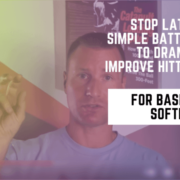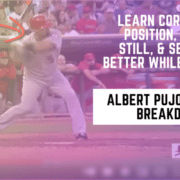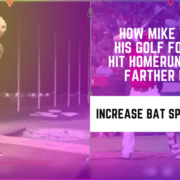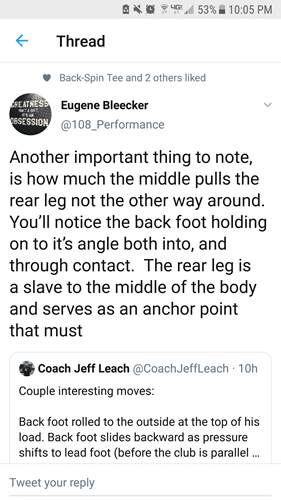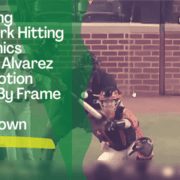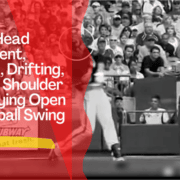Discover private youth hitting lessons in Fresno, CA. Learn how to use lower half ground reaction forces, baseball, and softball drills for beginners…
How To Use Your Legs Like Edwin Encarnacion
I recently worked with Christopher Solis one-on-one, from Pasadena, CA. He just signed with the University of Sioux Falls, South Dakota this Fall to play for the Cougars division-two baseball team. He’s in his third year of eligibility, and found me after watching a video I did analyzing Lou Gehrig’s swing.
We talked about a lot of current hitters, but one in particular was Edwin Encarnacion. In this video, we’ll be discussing:
- What “Blocking” is (according to German Champion discus thrower Robert Harting),
- How Edwin Encarnacion “Blocks”, and
- Building Chris Solis 2.0.
SCIENCE-BASED TRAINING:
Improve your hitting strategy dramatically by applying human movement principles.
Learn not only how and what to train but also the science behind the methods.
What “Blocking” Is (According to German Champion Discus Thrower Robert Harding)
From what I’m told, the current German discus throwers “block” very well. Other throwers end up spinning around and hopping after they throw. What’s the significance of Blocking?
My friend Rob Suelflohn (top-5 national Shot Putter in mid-80’s) sent an email about a Facebook comment from former Shot Put world record holder Brian Oldfield, about Blocking:
“I have been looking back one of my experiences with Gideon Ariel at Casa de Cota and remembered throwing from a force plate that measured the P.S.I.’s [pounds per square inch] in my foot work/technique. I don’t know the exact pressure I put on each step of the transition but I think it went something like this. The first left foot pivot out of the back of the circle beginning the drive was 500 PSI’s then lunging down to the middle of the circle to the next right foot pivot created a 750 PSI pressure . Finally, a shorter deeper step at the toe board registered 1000 PSI’s. I used my speed and torque down through the “J” phase pushing on the earth until the earth pushed back.”
How Edwin Encarnacion “Blocks”
This home-run was Edwin Encarnacion’s 26th of the 2014 season, and a walk-off. Interesting to note, he was out in front of this 85-mph hanging breaker. And this is where “Blocking” becomes really important. Two things:
- The swing is a snapping towel – move forward to landing (Fight Position), then snap back (Blocking) through the turn, and
- Blocking is a combination of falling and pushing into the ground (Gravity), and the ground pushing back (Gravitational Reaction Forces).
“Sit back” hitters will have a difficult time with Blocking because they’re moving forward during the Final Turn. A hitter would have to be at least 6’3″ and 230-40 lbs to get away with sitting back.
Building Chris Solis 2.0
In our time together, we focused primarily on footwork. Getting to the proper Fight Position, then Blocking, or pushing into the ground as hard as we could to initiate the Final Turn. In the after video, we were able to:
- Get him “shorter” with his back leg through the turn (90 degrees versus a 104 degree angle),
- Detach, or un-weight, his back foot during his turn, and
- Shift his head/spine angle back (Blocking helps with this).
Blocking is how to fix the “racing back elbow” or “bat drag” so rampant in Little League. If you watch a racing back elbow hitter – not necessarily arm barring – you’ll see a bent front knee throughout the swing. Blocking with the front side is virtually non-existent, and their swing is inefficiently being driven by the backside. The racing back elbow is the back shoulder joint fighting to get into a stable position during the Final Turn.
We have to re-condition the front side to Block like Robert Harting and Edwin Encarnacion.


